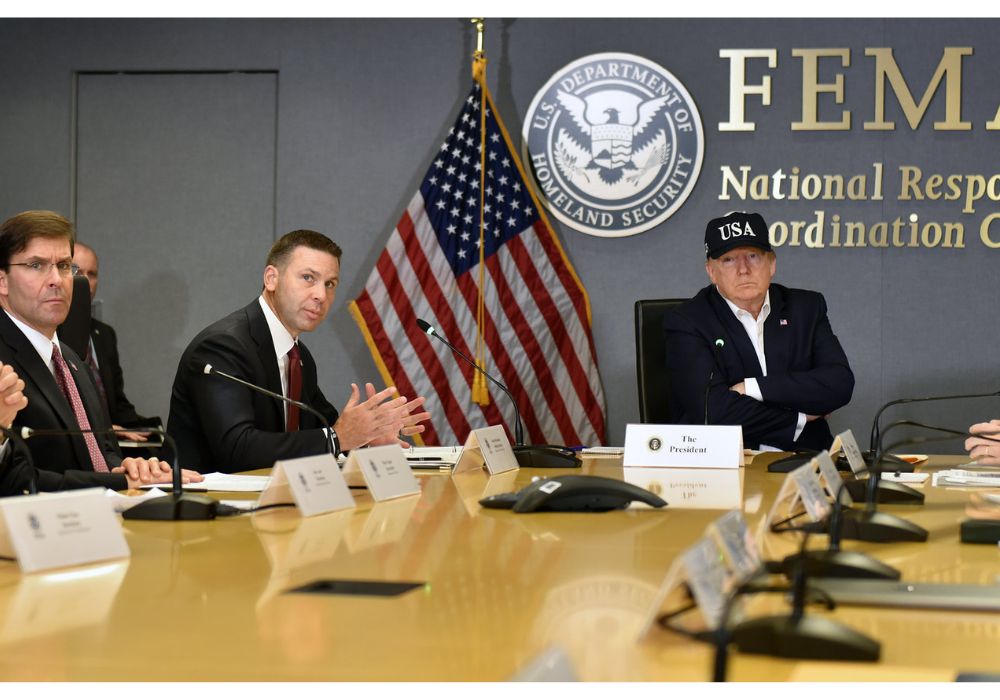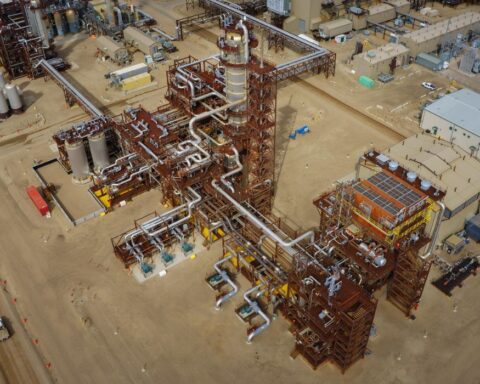Last week, the United States saw its first major climate disaster since Donald Trump won the presidential election, as wildfires ripped through parts of Los Angeles, wiping out entire neighbourhoods and forcing around 150,000 people to flee their homes. Insurance losses are estimated to reach as high as US$40 billion. Including economic losses and related financial impacts, AccuWeather puts the cost over US$250 billion.
How did Trump respond? In his textbook fashion: by reducing the catastrophe to the scale of a personal grudge match with rivals. In a post on Truth Social, the social media platform he launched in 2022, the incoming leader posted a picture of the fires with the words “It’s not climate change, it’s Democrats.”
Trump’s second term of office begins next week, and his administration will face more deadly and expensive catastrophes like the wildfires in Los Angeles. Trump’s poor management of natural disasters during his first term has been sharply criticized, though his mishandling hasn’t cast the same shadow that George Bush’s failures did after Hurricane Katrina. But the rate of climatic transformation is now accelerating into uncharted territory. Each of the last two years saw huge temperature spikes beyond the range of expectations from previous modelling. “Scientists are struggling to account for the speed of this recent jump,” journalist Eric Roston writes in Bloomberg, calling it “the greatest climate mystery in 15 years.”
The climate situation Trump inherits at his inauguration isn’t the same as the one he inherited in 2016. Last year the United States experienced 27 disasters whose losses exceeded a billion dollars, just shy of 2023’s record-setting 28. His strategy of approaching every catastrophe as a venue for political warfare will be tested even more than last time. Will it continue to work?
The president’s role when disaster strikes
Although U.S. presidents sit at the top of the emergency management system, they have only one official role to play when major emergencies happen: they sign disaster declarations, a necessary first step that frees up funding from the Federal Emergency Management Agency (FEMA) and other sources. The tendency among other presidents is to approve them quickly, but Trump has been known to wait. Olivia Troye, a Homeland Security adviser in the White House during Trump’s first term, said in October that Trump often delayed signing those declarations, depending on who would receive the aid.
In 2018, Trump initially refused to authorize disaster relief following deadly wildfires in California until staff showed him that Republicans live there too. “We went as far as looking up how many votes he got in those impacted areas . . . to show him these are people who voted for you,” an aide told Politico.
Beyond the initial declaration, the role of the president is mainly to provide comfort and reassurance that the federal government will help, says Thomas Birkland, a professor of public policy at North Carolina State University. “That’s the traditional thing presidents do in disasters, but like so many things, Donald Trump doesn’t behave like a traditional president,” he says. “Trump’s use of these disasters to score political points off governors is highly unusual.”
The quality of a president’s leadership does influence the success of response and recovery efforts. The president can alleviate harm and improve outcomes through swift action, clear communication and close collaboration. But Trump’s handling of past crises like Hurricane Maria and the COVID-19 pandemic has been defined by delays, misinformation, blame-shifting and political manoeuvring.
What can we learn of Trump’s approach to disasters from his first term?
He’ll look for leverage by creating delays – with deadly consequences
Traditionally, politicians treat natural disasters as opportunities to rise above partisan politics, but Trump never retreats from the red-blue divide. His approach to disaster response can be characterized by his fascination with using nuclear bombs to dispel hurricanes, an idea he floated repeatedly during his first term. He’ll always find an enemy and give them all the blame he can.
When Michigan flooded in 2020, he threatened to withhold federal aid in order to pressure the state’s governor to retract a plan to mail absentee ballot applications.
He’s been doing the same thing in California. In September, he pledged to hold back wildfire aid unless Governor Gavin Newsom acquiesces to remove environmental protections in the Sacramento–San Joaquin River Delta. “We won’t give him money to put out all his fires,” Trump said. “And if we don’t give him the money to put out his fires, he’s got problems.”
When Hurricane Maria inflicted roughly US$100 billion in damages, Trump’s administration withheld $20 billion in aid, creating bureaucratic obstacles and “unprecedented procedural hurdles,” a report found. His officials then blocked an investigation into why the recovery funding had been obstructed. It ended up taking nearly a full year to restore power to Puerto Rico, and almost 4% of the island’s population, or some 130,000 people, were ultimately displaced.
A subsequent Harvard study showed that the slow recovery contributed to thousands of excess deaths – more than 70 times the official death toll, researchers estimated – as a result of damaged infrastructure and reduced health services. Trump rejected the higher death statistics and accused Democrats of inflating the numbers to make him look bad.
He’ll try to be the star of the show
When Hurricane Harvey dumped 1.5 metres of rain on eastern Texas in 2017, killing 88 and causing US$158.8 billion in damage, Trump’s response demonstrated a stark “empathy gap,” as he repeatedly insisted on how well things were going and treated his visit to a crisis centre like a rally. “What a crowd!” he called out. “What a turnout!”
The same impulse was evident in Puerto Rico in 2017 after Hurricane Maria, when he threw paper towels to a crowd seeking relief supplies, launching them into the air with the flair of someone tossing swag at a sporting event. Later he tweeted that it had been a “great day.”
He’ll sow confusion
In 2019, when Hurricane Dorian devastated the Bahamas, Trump erroneously tweeted that it would strike Alabama. When the National Weather Service corrected him, Trump then used a black Sharpie to redraw a map from the National Oceanic and Atmospheric Administration to include Alabama, according to reporting by CNN.
With the Los Angeles wildfires, Trump has already managed to refocus the conversation for his followers on unrelated protections for an endangered species of fish called smelt, falsely claiming that conservation efforts had caused fire hydrants to run dry.
A new phase in the climate crisis
Trump may dismiss climate change as a hoax, but as president he’ll have no choice but to contend with its effects. He bears some responsibility for the worsening conditions: in order to boost fossil fuel production during his first term, he weakened, dismantled and eliminated dozens of rules and regulations aimed at reducing pollution. And he’s promising more of the same. But even if he tries to stop production of wind turbines, as he threatened to do last week, he can’t control the weather.







